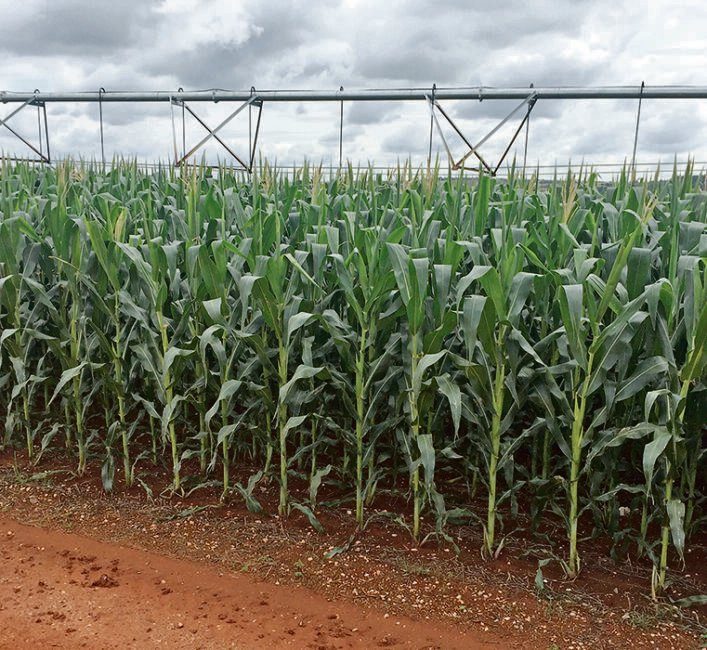Better weather and hot demand vie for market attention

Grain markets are being pulled in two directions. Improving weather in North America and Europe is providing downward pressure on prices but that is partly being offset by a Chinese buying spree on new crop American corn as prospects for Brazilian supply fade.
As of May 21, China had booked 10.7 million tonnes of new crop corn from the United States.
It is wildly unprecedented to book so much, so early.
That is 41 percent of the 26 million tonnes that the U.S. Department of Agriculture forecasts China will import from all sources in the 2021-22 marketing year.
It must be noted that other importers had booked an additional four million tonnes of new crop U.S. corn. That by itself would be considered exceptional demand for a crop that is still being seeded.
Buyers appear to be spooked by the poor prospects for Brazil’s corn crop, which is suffering from drought.
The USDA’s May 12 world supply and demand report pegged Brazil’s total corn production at 102 million tonnes, down from 109 million in the April report.
But some forecasts have lower expectations. Soybean and Corn Advisor editor Michael Cordonnier two weeks ago forecast 97 million tonnes with the possibility of an even lower number if the drought continued.
Last week, Brazilian company Agroconsult issued a forecast of only 91.1 million tonnes, 11 million tonnes less than the USDA’s number.
That would limit the amount of corn Brazil has to export. The USDA had forecast 35 million tonnes of Brazilian exports. Agroconsult sees only 26 million.
These developments helped stabilize Chicago corn futures prices last week but the crop market remained generally under downward pressure from improving crop prospects in the Northern Hemisphere.
Recent rain and snow across parts of the Canadian Prairies and U.S. northern Plains provided desperately needed moisture, lessening immediate worries, even though accumulations fell far short of making up the severe deficit.
The moisture situation has also improved in southern Iowa and Illinois, two key states for corn and soybean production.
More rain was expected in that part of the Midwest and in Kansas this week.
Seeding in the Midwest is well ahead of normal and that can lend support to yield potential.
As of May 16, 80 percent of corn was in the ground, up from the five year average of 68 percent.
Soybeans were 61 percent planted, up from the average of 37 percent.
And the crop in the key hard red winter wheat state of Kansas looks like it has overcome its challenges and is on its way to excellent yields, barring weather surprises in the weeks until harvest.
The annual industry tour of Kansas last week forecast an average yield potential of 58.1 bushels per acre, a record topping the 57 bu. per acre set five years ago and much more than the current USDA forecast for 48 bu.
Crop scouts reported lush crops where only a few weeks ago there were concerns about frost damage and dry soil. But since then there has been regular rain and warm weather, so much so that there is talk of the potential for increased disease pressure in the heavy crop stands.
Although crop scouts were optimistic about the crop’s potential in Kansas, I should note that the May 16 USDA crop condition report for the range of states that grow hard and soft winter wheat said that 48 percent was in the good to excellent categories, compared to 52 percent last year at the same point.
While Kansas and Oklahoma looked good, Texas and Nebraska were not as good as last year.
In Europe, large areas have received welcome rain recently but a cool spring is delaying crop maturity raising the potential for a late harvest.
Crops in France have faced weather challenges but any shortfalls there are expected to be offset by good conditions in southeastern Europe.
Grain trade association Coceral last week forecast soft wheat production at 130.9 million tonnes, up from last year’s poor production of only 118.7 million tonnes.
It sees rapeseed production at 16.6 million tonnes, up from 16.1 million last year. However that is still about two million tonnes less than was an average production five years ago.
Russia’s agricultural ministry last week pegged the country’s 2021 grain crop at 127.4 million tonnes, including 81 million tonnes of wheat. That would be down from last year’s 133.5 million tonnes of grain, including 85.9 million tonnes of wheat.
The forecast for 81 million tonnes of wheat might be less than last year, but is an improvement from forecasts a few months ago when the assumption was that dry weather at seeding last fall had led to elevated levels of winter kill and badly damaged yield prospects.
Source: producer.com

